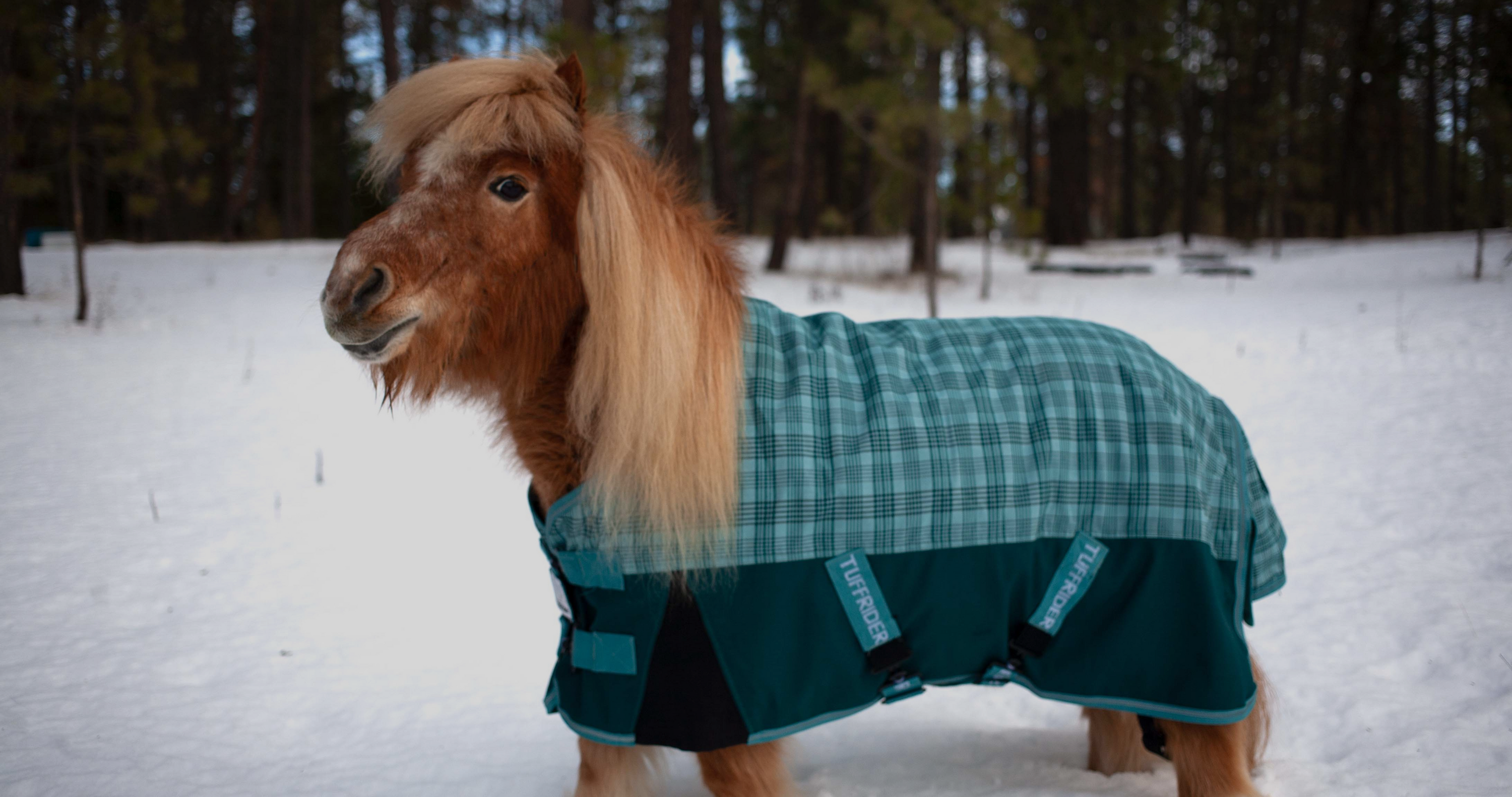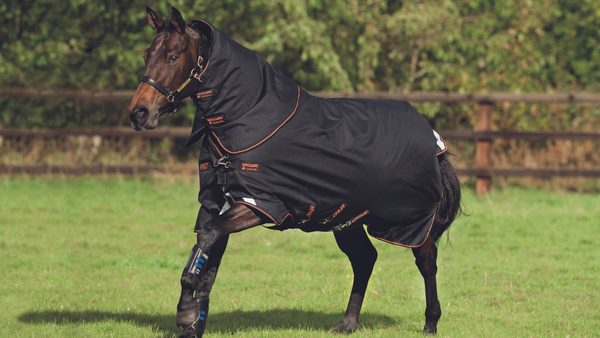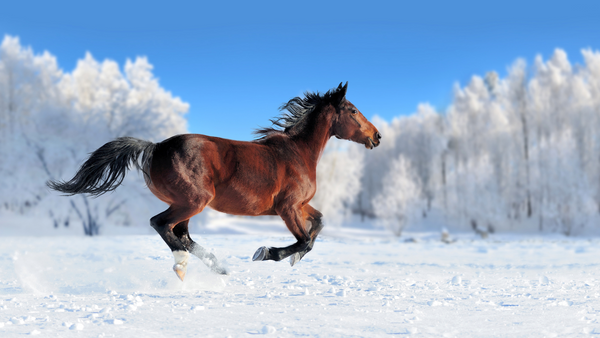Like most things in the equestrian world, there is no simple answer to this question. When you start blanketing your horse depends on the weather in your area and your individual horse. Luckily, there are a few things you can watch for to see if your horse is getting cold and struggling to maintain their body heat.
Physical Signs of Cold
Don’t you wish your horse could just tell you when he’s cold? While they can’t talk, horses do have ways of signaling when they’re feeling cold. One of the most obvious signs that your horse is too cold is shivering. However, you don’t want to wait to use a TuffRider horse blanket until they’re shivering. Not only does shivering mean they’re uncomfortable, it also burns essential calories that your horse needs to make it through the winter.
Before your horse starts shivering, you may notice that they’re huddling close together with the other horses in the herd. They’ll most likely stand with their tails to the wind and clump together. Like penguins in the Arctic, horses clump together like this to share and preserve body heat. While it’s a natural behavior and not necessarily a bad thing, it does mean your horse is feeling chilly.
When you look out at your pasture, is your horse standing with his head down, tail tucked, and ears back? This posture is a classic display from a cold and grumpy horse. Blanketing isn’t just about your horse’s physical health, it’s also about their mental and emotional health, too.
If you do decide to blanket your horse, how do you tell if the blanket is heavy enough? Deciding whether to use a medium weight horse blanket, heavy weight horse blanket with detachable neck, or a horse blanket with neck cover can be tough. If the blanket your horse is wearing isn’t keeping them warm enough, they’ll feel cold to the touch near their kidneys, which are located just behind the saddle area. You can also touch their shoulders and chest to see if they’re staying warm. Just keep in mind that the chest area may feel colder than either the shoulders or kidneys as there tends to be a draft that comes up from the bottom of the blanket in this area.
If your horse displays any of these signs of being cold, bringing a blanket out to them may make them feel happy and more comfortable.
Weather Conditions
Deciding whether or not to blanket your horse depends a lot on the current weather conditions. Keep in mind that wet is the enemy of warmth. Wet coats won’t keep your horse warm as efficiently. If it’s raining or snowing, you may consider blanketing more than if it was a cold, but sunny, day.
Normally, horse hair raises up and becomes puffy when it’s doing its job effectively and properly insulating your horse. This mechanism where the hair follicles lift up actually traps more air underneath the coat, creating an insulating barrier. If your horse is soaked through, the hair coat won’t be able to puff up and instead will become slicked down against the skin.
Wind also works against your horse when it comes to staying warm. On a windy day, even horses with a thick coat of winter hair may be cold if the wind is blowing through their coat and exposing the skin underneath.
Consider both the wind and rain when deciding whether or not to blanket your horse. On a nice, sunny 35-degree day, your horse may not need a blanket. But when it’s 45 degrees outside and pouring down rain, they may need a little extra help keeping warm, such as a TuffRider horse blanket.
Is your horse displaying all the physical signs of being cold? Are they shivering when you go out to get them each day or standing with their head down and tail tucked? Is it pouring down rain or snowing hard? There are many signs to tell you that you need to start blanketing your horse, you just need to know what to look for. Ideally, by stepping in and using a medium weight horse blanket when you first notice these more subtle signs, you’ll avoid bigger problems and health issues later on, such as weight loss and failure to thrive.
Be Wary of Over Blanketing
Blankets can be a double-edged sword. If you blanket your horse too heavily, they can sweat underneath all the layers. Not only does this often lead to severe rain rot and skin irritation, sweating underneath a blanket actually makes your horse colder than having no blanket at all. This is due to the fact that sweat and moisture will rarely dry itself underneath the blanket. So, as temperatures drop later on in the day, the trapped sweat will leave them colder than ever before with no way to dry out.
If you do have to start blanketing your horse, air on the side of caution. Start with lighter blankets, like a sheet or medium weight horse blanket before switching to anything more intense, like a horse blanket with neck cover.
Horses Aren’t Humans
Remember, just because you’re cold, doesn’t mean your horse is cold. Horses were designed to live outside and, most of the time, they can tolerate cold temperatures pretty well. However, it’s important to understand when your horse is telling you they’re cold, so you can start using TuffRider horse blankets.
While some horses don’t mind the cold at all, and even thrive in it, other breeds are quite sensitive to the cold and don’t adapt well. For example, a big draft horse or stocky Shetland in the neighboring pasture will grow a coat like a Yak and thrive without blankets no matter the weather. But, a sensitive Thoroughbred or Arabian, will look miserable in cold weather without a blanket.
Find Blankets on Breeches.com
Just like not every horse needs a blanket, the same blanket won’t fit every horse! On the Breeches.com website, we offer a wide variety of medium weight horse blankets, heavy weight horse blankets with detachable neck, horse blankets with neck cover, and so much more. From Horseware to TuffRider horse blankets, we carry trusted brands to provide our customers with the high-quality blankets they rely on to get their horses through winter safely and happily.






